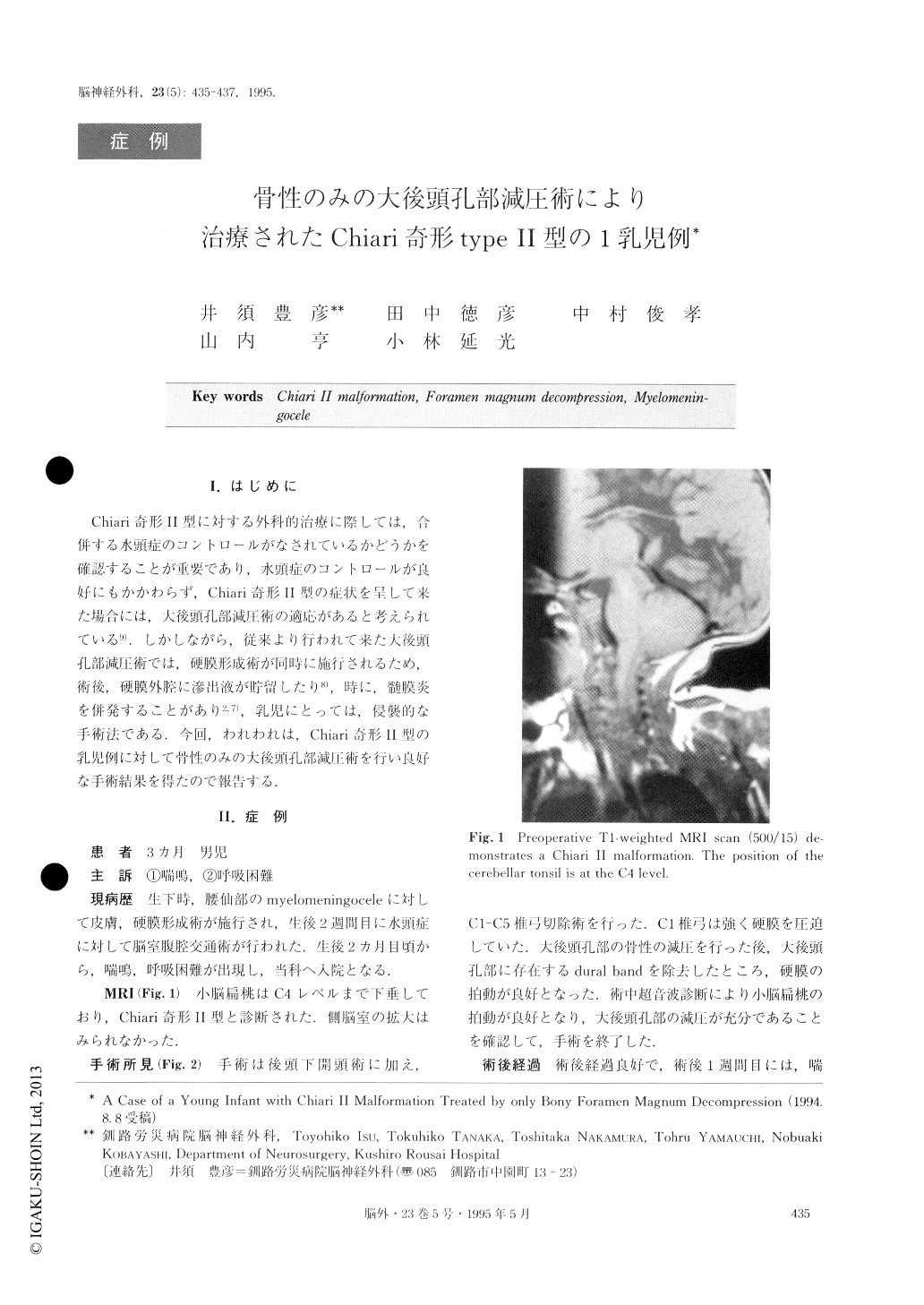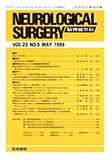Japanese
English
- 有料閲覧
- Abstract 文献概要
- 1ページ目 Look Inside
I.はじめに
Chiari奇形Ⅱ型に対する外科的治療に際しては,合併する水頭症のコントロールがなされているかどうかを確認することが重要であり,水頭症のコントロールが良好にもかかわらず,Chiari奇形Ⅱ型の症状を呈して来た場合には,大後頭孔部減圧術の適応があると考えられている9).しかしながら,従来より行われて来た大後頭孔部減圧術では,硬膜形成術が同時に施行されるため,術後,硬膜外腔に滲出液が貯留したり8).時に,髄膜炎を併発することがあり2,7).乳児にとっては,侵襲的な手術法である.今回,われわれは,Chiari奇形Ⅱ型の乳児例に対して骨性のみの大後頭孔部減圧術を行い良好な手術結果を得たので報告する.
A case of a young infant with Chiari Ⅱ malformation treated by only foramen magnum decompression was reported. The patient was a 3-month-old infant with a one-month history of stridor and respiratory distress. The myelomeningocele was surgically repaired. At the age of two weeks, a ventriculoperitoneal shunt had been inserted. On admission, MRI demonstrated Chiari Ⅱ malformation. The shunt mechanism was function-ing. Suboccipital craniectomy and upper cervical laminectomy from C1 to C5 level was performed. After the removal of the dural band at the foramen magnum level, good pulsation of the dura mater was demon-strated. After surgery, the stridor and respiratory dis-tress disappeared. Foramen magnum decompression carried out by our surgical techique is advantageous because all the proce-dures are extradural and there are, therefore, fewer postoperative complications than the foramen magnum decompression techniques previously reported.

Copyright © 1995, Igaku-Shoin Ltd. All rights reserved.


